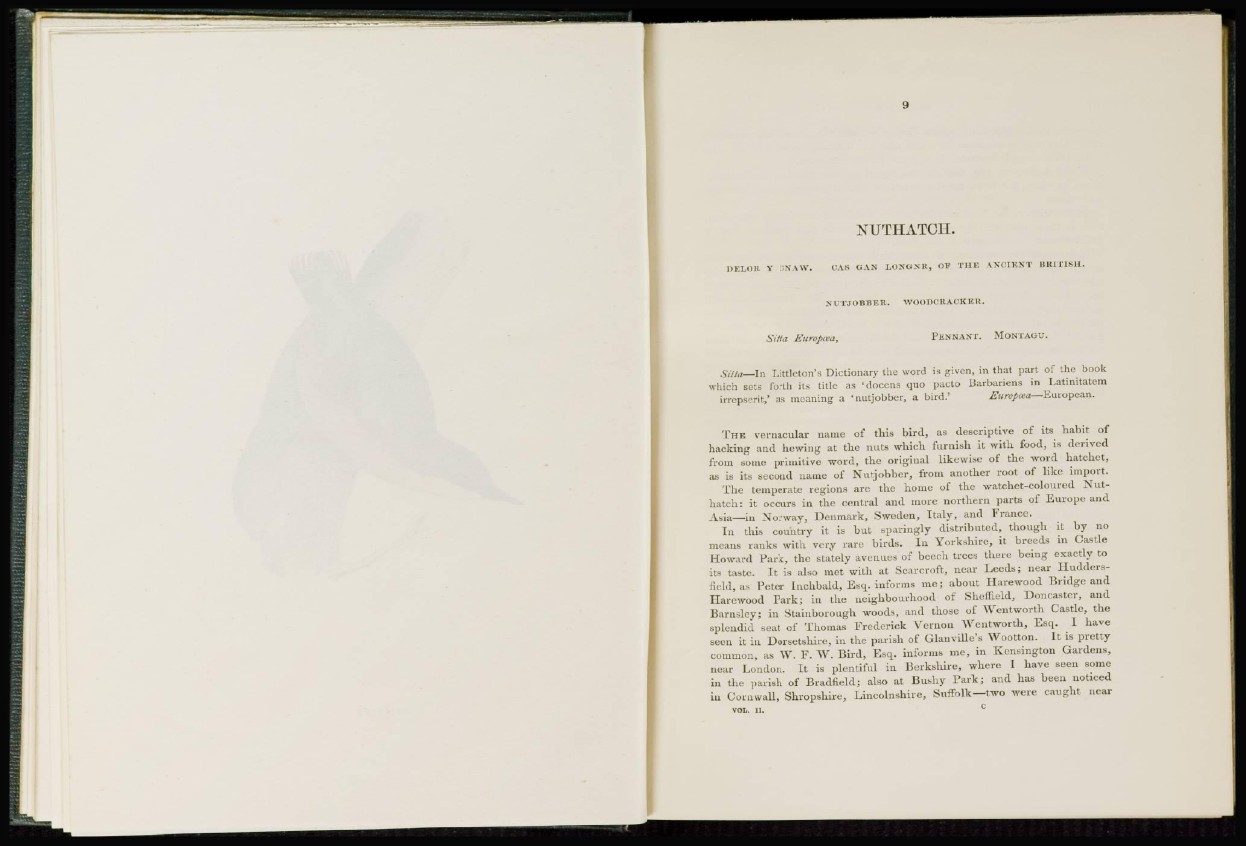
NUTHATCH.
DELOR Y CNAW. OAS CAN LOXGNR, OF THE ANCIENT BRITISH.
NUTJOBBER. WOO DC RACK BR.
Sitia Europcea, PENNANT. MONTAGU.
Sitta—In Littleton's Dictionary the word is given, in that part of the book
which sets forth its title as 'docens quo pacto Barbariens in Latinitatem
irrepserit/ as meaning a 'nutjobber, a bird.1 Europcea—European.
THE vernacular name of this bird, as descriptive of its habit of
hacking and hewing at the nuts which furnish it witli food, is derived
from some primitive word, the original likewise of the word hatchet,
as is its second name of Nutjobber, from another root of like import,
The temperate regions are the home of the watchet-coloured Nuthatch:
it occurs in the central and more northern parts of Europe and
Asia—in Norway, Denmark, Sweden, Italy, and France.
In this country it is but sparingly distributed, though it by no
means ranks with very rare birds. In Yorkshire, it breeds in Castle
Howard Park, the stately avenues of beech trees there being exactly to
its taste. It is also met with at Scarcroft, near Leeds; near Huddersfield,
as Peter luchbald, Esq. informs me; about Ilarewood Bridge and
Harewood Park; in the neighbourhood of Sheffield, Doncaster, and
Barusley; in Stainborough woods, and those of Wentworth Castle, the
splendid seat of Thomas Frederick Vernon "Wentworth, Esq. I have
seen it in Dorsetshire, in the parish of Glanvdle's Wootton. It is pretty
common, as W. F. W. Bird, Esq. informs me, in Kensington Gardens,
near London. It is plentiful in Berkshire, where I have seen some
in the parish of Bradlield; also at Bushy Park; and has been noticed
in Cornwall, Shropshire, Lincolnshire, Suffolk—two were caught near
VOL. II. c